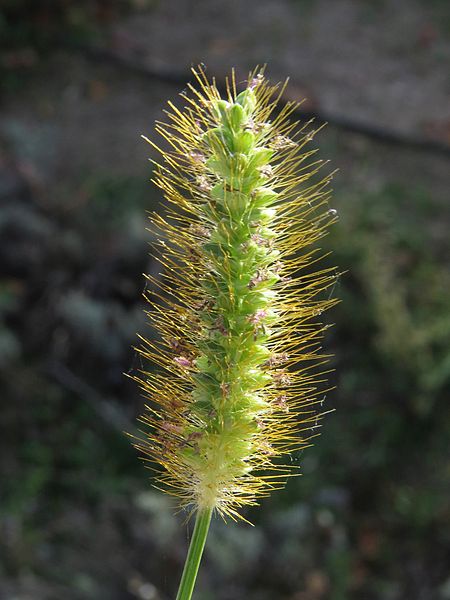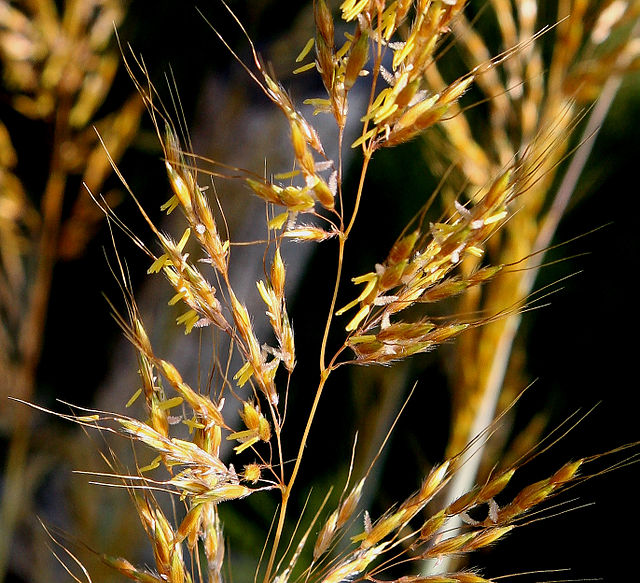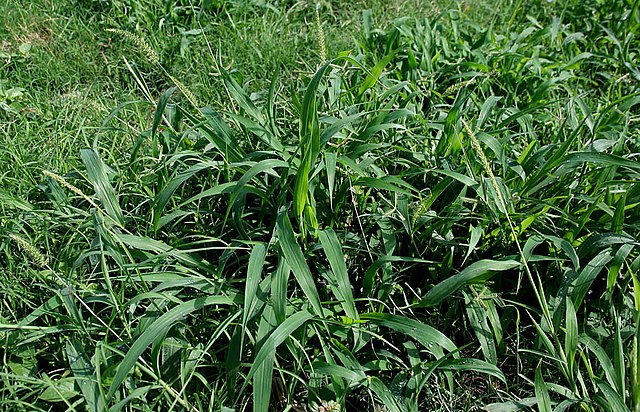A grassland is an area where the vegetation is dominated by grasses (Poaceae). However, sedge (Cyperaceae) and rush (Juncaceae) can also be found along with variable proportions of legumes, like clover, and other herbs. Grasslands occur naturally on all continents except Antarctica and are found in most ecoregions of the Earth. Furthermore, grasslands are one of the largest biomes on Earth and dominate the landscape worldwide. There are different types of grasslands: natural grasslands, semi-natural grasslands, and agricultural grasslands. They cover 31–69% of the Earth's land area.
Nachusa Grasslands, spring 2016
Setaria pumila, a species of Poaceae (the dominant plant family in grasslands)
Coxilhas (hills covered by grasslands) in the Pampas, Rio Grande do Sul state, Brazil
Black rhino
Poaceae or Gramineae is a large and nearly ubiquitous family of monocotyledonous flowering plants commonly known as grasses. It includes the cereal grasses, bamboos, the grasses of natural grassland and species cultivated in lawns and pasture. The latter are commonly referred to collectively as grass.
Poaceae
Grass flowers
Drawing of Anomochloa marantoidea, one of the most primitive living grass species
Setaria verticillata from Panicoideae








